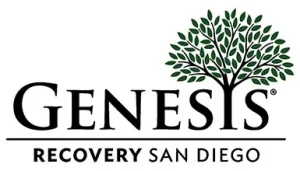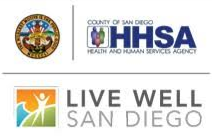Californians continue to struggle with drug addiction and homelessness despite the state’s many initiatives to combat the opioid crisis. Fentanyl-related overdose deaths are on the rise and the COVID-19 pandemic hasn’t helped the situation. In fact, overdose deaths in July and August of this year were more than 50% higher than they were in February and March of 2020. California’s youth have also contributed to the state’s drug addiction and homelessness crisis. According to a study published by the University of California Los Angeles, California has enough homeless students to fill Dodger Stadium 5 times. In addition to that, substance use disorders among California’s young adults aged 18 to 25 occur at nearly twice the state’s average rate. Here’s what you need to know about drug addiction and homelessness in California, how the two issues are related, and what we’re doing to help the situation.
Addiction and Homelessness: Sobering Statistics
The number of people in California grappling with drug addiction and homelessness is a sobering reality. Now, more than ever, the state’s homeless, mentally ill, and drug addicted find themselves suffering while statewide initiatives like a drug sobriety center, additional psychiatry centers, and expanded hours in the state’s Behavioral Health Access Center are still in the works.
“We all know what we want to see happen - we budget for it, but we haven’t seen it yet,” Rafael Mandelman, who serves on the San Francisco Board of Supervisors, says. “But we did have an intervening pandemic.” Despite ongoing efforts, California’s drug addiction and homelessness remain an issue, evident by the following statistics:
- According to a 2019 report, an estimated 4,000 San Franciscans, 35% of whom are Black, suffer from mental illness, homelessness, and addiction. 41% frequently use California's urgent and emergency psychiatric services.
- California’s Health Care Almanac reports that more than half of California students have used alcohol and almost 40% have used marijuana by the 11th grade.
- Every day, an estimated 3 San Diegans die from opioid related and other drug overdoses. In San Francisco, approximately 2 people die from fentanyl-related drug overdose every day.
- According to The San Francisco Chronicle, medical examiners found that 468 people died of a drug overdose between January and August 2020 in San Francisco.
- According to a report published by the University of California Los Angeles (UCLA), the number of homeless students in California rose by nearly 50% over the last 10 years.
- The same UCLA report revealed that students of color were the most affected by homelessness. Latino students accounted for 70% of the group, while Black students made up 9% of California’s homeless student population.
- According to the U.S. Department of Housing and Urban Development, 27% of people experiencing homelessness and 53% of people without shelter in the United States live in California.
- The California Department of Education reported that more than 269,000 California students in kindergarten through 12th grade experienced homelessness last year.
Reasons For California’s High Rate of Drug Addiction and Homelessness
Several factors have contributed to California’s high rate of drug addiction and homelessness. Two of the more pressing factors include:
- Poverty & Unemployment. Nearly two-thirds of the 6.3 million K-12 students in California are economically disadvantaged. This rate of poverty directly affects the number of homeless students in California. Job loss as a result of COVID-19 has increased poverty and unemployment in the state, putting students at risk of homelessness and making stressed adults more likely to turn to addictive substances like drugs and alcohol for temporary “stress relief.”
- Mental illness. Mental illness can lead to addiction challenges and homelessness. Unfortunately, the rate of depression among teens in California has steadily increased. More than half of California adolescents who experienced major depressive episodes did not receive treatment, making them more likely to turn to drugs and alcohol as a form of self-medication. Not being able to keep jobs, struggling with low incomes, withdrawing from family and friends, and grappling with destructive, delusional, and harmful thoughts can also put people with mental illness at a greater risk of experiencing homelessness.
The Connection Between Drug Abuse & Homelessness
Homelessness and drug addiction often coexist. Sometimes, the end result of homelessness is substance abuse and sometimes, substance abuse leads to homelessness. Regardless of what issue occurs first, there is often a connection between homelessness and drug abuse.
Consider the following statistics about addiction and homelessness:
- According to the Substance Abuse and Mental Health Services Administration (SAMHSA), 38% of homeless people are alcohol dependent. 26% of people without a home are dependent on other addictive drugs.
- A survey conducted by the United States Conference of Mayors asked 25 cities to share the top reasons for homelessness in their region. 68% of mayors reported that substance abuse was the number one reason for homelessness among single adults. Substance abuse was also reported as one of the top three causes of family homelessness in 12% of the cities surveyed.
- The U.S. Department of Housing and Urban Development (HUD) estimates that more than 50% of individuals living in supportive housing programs had either a substance use disorder, a psychiatric disorder, or both.
- In 2019, California was the highest-ranking state for homelessness with more than 150,000 homeless people in the state.
Restoring Lives Affected By Drug Addiction in California
At Genesis Recovery, we’re proud to call California home. Located just 30 minutes east of downtown San Diego, our staff members and clinical team are well aware of California’s drug addiction and homelessness problem. But we’ve also witnessed many of our residents who call California home rehabilitate their lives and change for the better after enrolling in our multi-faceted 12-step treatment program.
That’s why we’ve made it our mission to help treat substance use challenges and restore lives, families, and California neighborhoods afflicted by addiction. You can begin again, too. Let us help you get there. Call us today at 619-797-7319 if you or a loved one is in need of help.


